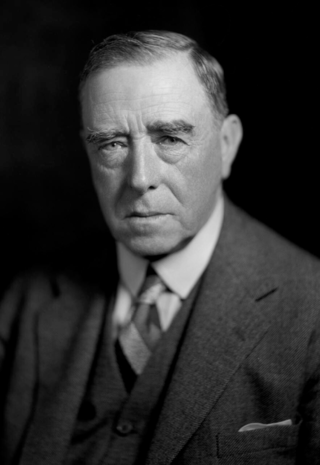
The Country Liberal Party of the Northern Territory (CLP) is a centre-right political party in Australia's Northern Territory. In local politics it operates in a two-party system with the Australian Labor Party (ALP). It also contests federal elections as an affiliate of the Liberal Party of Australia and National Party of Australia, the two partners in the federal coalition.

The Northern Territory is an Australian territory in the central and central northern regions of Australia. The Northern Territory shares its borders with Western Australia to the west, South Australia to the south, and Queensland to the east. To the north, the territory looks out to the Timor Sea, the Arafura Sea and the Gulf of Carpentaria, including Western New Guinea and other islands of the Indonesian archipelago.

The Legislative Assembly of the Northern Territory is the unicameral legislature of the Northern Territory of Australia. The Legislative Assembly has 25 members, each elected in single-member electorates for four-year terms. The voting method for the Assembly is the full-preferential voting system, having previously been optional preferential voting. Elections are on the fourth Saturday in August of the fourth year after the previous election, but can be earlier in the event of a no confidence vote in the Government. The most recent election for the Legislative Assembly was the 2020 election held on 22 August 2020. The next election is scheduled for 24 August 2024.

Stephen Edward "Sam" CalderAM, OBE, DFC was a decorated World War II flying ace, member of the Australian House of Representatives, and one of the founders of the Northern Territory Country Liberal Party. In federal parliament, he sat with the Country Party, later renamed the National Country Party.

Ronald John Withnall was an Australian politician and lawyer.

The Parliament of the Northern Territory is the unicameral legislature of the Northern Territory of Australia. It consists of the Northern Territory Legislative Assembly and the Administrator of the Northern Territory, who represents the Governor-General. It is one of three unicameral parliaments in Australia, along with those of Queensland and the Australian Capital Territory. The Legislative Assembly replaced the previous Legislative Council in 1974. It sits in Parliament House, Darwin.

Adam Graham Giles is an Australian former politician and former Chief Minister of the Northern Territory (2013–2016) as well as the former leader of the Country Liberal Party (CLP) in the unicameral Northern Territory Parliament. Giles was the first Indigenous Australian to serve as a head of government in Australia.

Michael Patrick Francis Gunner is an Australian politician and was the 11th Chief Minister of the Northern Territory from 2016 to 2022. He is a Labor member of the Northern Territory Legislative Assembly, having held his seat of Fannie Bay in Darwin since the retirement of then Chief Minister Clare Martin at the 2008 election.
Delia Phoebe Lawrie is an Australian politician. She was a member of the Northern Territory Legislative Assembly from 2001 to 2016, representing the electorate of Karama. She was a Labor member from 2001 to 2015, and served as party leader and Leader of the Opposition from 2012 to 2015. On 10 October 2015, following her loss of Labor preselection to recontest her seat at the 2016 election, she resigned from the party to sit as an independent.

The 2016 Northern Territory general election was held on Saturday 27 August 2016 to elect all 25 members of the Legislative Assembly in the unicameral Northern Territory Parliament.
June D'Rozario is an Australian urban planner and former politician.

Rupert James Kentish was an Australian politician. He was a Country Party member of the Northern Territory Legislative Council from 1968 to 1974 and a Country Liberal Party member of the Northern Territory Legislative Assembly from 1974 to 1977.

The 1932 Victorian state election was held in the Australian state of Victoria on Saturday 14 May 1932 to elect 44 of the 65 members of the state's Legislative Assembly. The other 21 seats were uncontested.

Natasha Kate Fyles is an Australian politician and former teacher serving as the 12th and current chief minister of the Northern Territory and minister for Health. She has been the leader of the Northern Territory branch of the Australian Labor Party (ALP) since May 2022 and a member of the Northern Territory Legislative Assembly (MLA) for the division of Nightcliff since August 2012. She previously served as 22nd attorney-general of the Northern Territory and the territory’s minister for Justice from 2016 to 2020.

Ellen Mary Stack is an Australian medical doctor and the first female Lord Mayor of an Australian capital city. She was the mayor of the City of Darwin, Northern Territory from 1975 to 1979, and lord mayor from 1979 to 1980. She is best known for her work following the destruction of Darwin due to Cyclone Tracy.
Selena Jane Malijarri Uibo is an Australian politician. She is a Labor member of the Northern Territory Legislative Assembly since 2016, representing the electorate of Arnhem.

The 2020 Northern Territory general election was held on 22 August 2020 to elect all 25 members of the Legislative Assembly in the unicameral Northern Territory Parliament.

Mark Paul Michael Turner is an Australian politician and former Northern Territory Police negotiator. He was elected as the Labor member for the electoral division of Blain in the Northern Territory Legislative Assembly at the 2020 Northern Territory election.
The North Australia Party (NAP) was a short-lived political party in Australia's Northern Territory, primarily active in Alice Springs and the surrounding areas of Central Australia. It was founded in 1965 under the leadership of Lionel Rose and contested the Northern Territory Legislative Council election later that year, winning a single seat. The party has been cited as a predecessor of the modern Country Liberal Party (CLP).
Brent Potter is an Australian politician, representing the electoral division of Fannie Bay in the Northern Territory Legislative Assembly since 20 August 2022.












